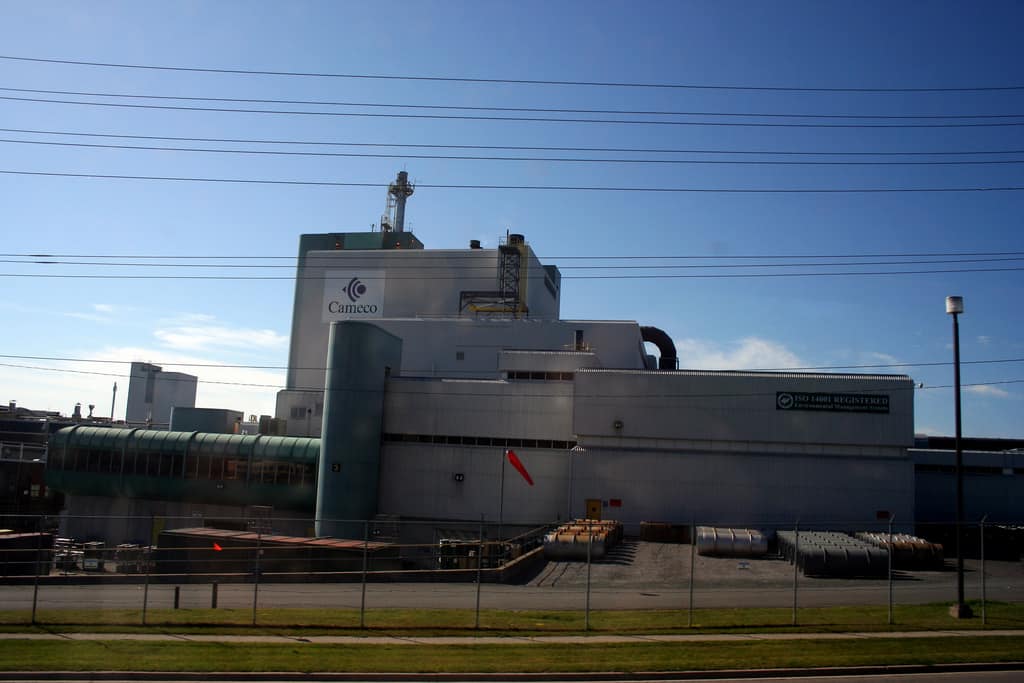Cameco Corp.’s (TSX:CCO)(NYSE:CCJ) stock price shed $1.10 to close at $11.04 on the Toronto Stock Exchange on October 3, which was a 9.06% decline in a single trading day. The stock also shed a whopping 9.16% on the New York Stock Exchange during the same trading day.
The stock has fallen to its lowest price since January this year, and the next share price move may depend very much on whether the negative sentiment leading to this selloff remains fueled up by subsequent news events.
Why did the stock plummet this much in one trading day?
It all comes down to an analyst report.
A Scotia Capital analyst downgraded Cameco’s shares from “sector perform” to “sector underperform” on Tuesday and gave it a $10 price target, which was a significant 31% cut from the firm’s previous $14.50 price target.
Scotia’s downgrade is premised on the seemingly weak uranium outlook into the next decade, and the firm cut its uranium market price estimates for 2018-2022 by an average 27%.
This was a significant reversal of opinion, and those investors who believed in the Scotia Capital’s assertion on Cameco’s near-term fortunes sold their positions in the world’s second-biggest uranium producer heavily.
Uranium spot prices are back in bearish territory at US$20 per pound on September 25, and they could be heading back to their November multi-year lows after a false recovery to ~US$26 in February this year.
While it is possible uranium prices may rebound as Japan, China, The United Arab Emirates, and India bring online several nuclear power plants in a few years from now, there is still a significant threat to the uranium demand and price growth thesis, as Germany and the United States may reduce uranium fuel consumption.
Fool contributor Maxx Chatsko recently discussed the uncertainty surrounding Cameco and uranium’s future prospects on October 3 in an article coincidentally published on the same day as Scotia’s downgrade of Cameco stock.
It is still very possible that uranium may hold some price ground in the near term, allowing Cameco to generate some positive cash flows to sustain its $0.10 quarterly dividend per share, which now yields an annualized 3.6%, but the long-term outlook may be very cloudy.
One more thing
There was another market confidence shaker in Scotia’s rating update on Cameco, and this could have accelerated the stock’s price decline.
Scotia believes that Cameco should consider a further dividend cut as a prudent measure.
The threat of a dividend cut is a serious issue for the valuation of any dividend-paying stock as the present value of future dividends is a major input in valuation methodologies.
The dividend provides a return cushion for investors.
Cameco has held on to its $0.10 quarterly dividend since 2011, even during the worst of times, when world uranium spot prices bottomed in 2016.
Given the threat of a potentially declining uranium price outlook when Cameco’s fixed-price contracts are set to be renewed, probably at lower prices in under five years, a selloff was very likely.
Final thoughts
Cameco is suffering from the protracted oversupply in the uranium nuclear fuel market — a fact that is well known to all market participants — the recent highlight of which shouldn’t cause any shareholder panic.
The uranium market price could still go either way in the long term, and contrarian investors may welcome this opportunity to buy the dip in the low-cost uranium miner’s stock.
However, there is still a significant risk in Cameco’s stock from the overhanging Canada Revenue Agency case; the global uranium mining giant faces a significant tax ruling that could potentially wipe out about $2.4 billion from the company’s balance sheet by 2018.







